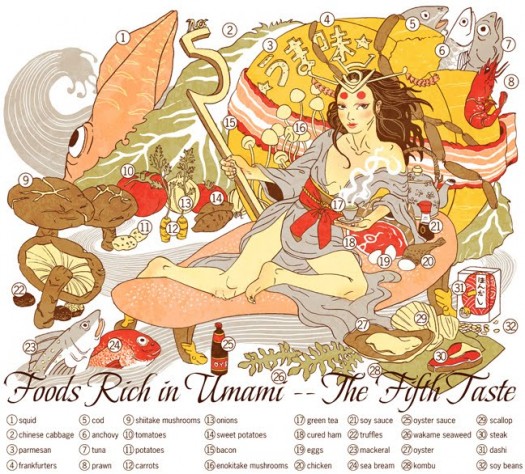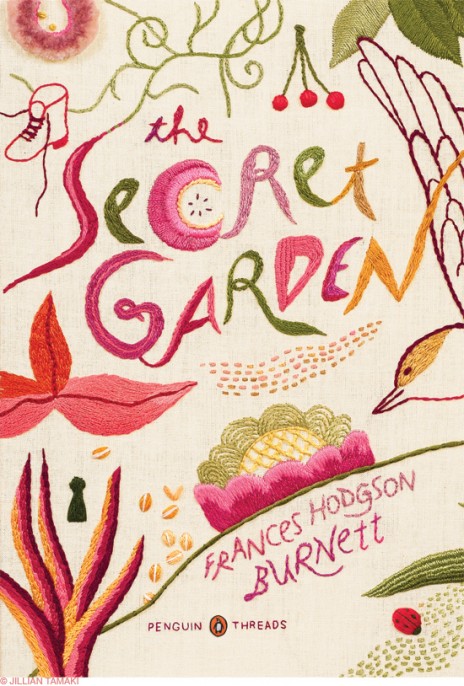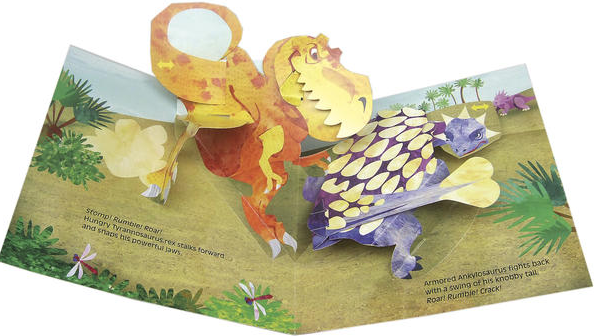Occasionally (and more and more frequently) I have been asked to read and review a children’s book in its e-version, but I don’t consider it a very satisfactory way to do it. The reason is what I call, analogously, umami.
Umami is the name given to the so-called fifth category of “taste” capable of identification by the human tongue. The other four are sweet, bitter, sour, and salty.
The Chicago Tribune described it well:
“..a sensation on the palate, a rich, meaty, full-bodied savoriness associated with foods rich in glutamates, such as soy sauce and aged cheeses…”
[More scientifically, umami is the word for the taste sensation we get with foods that react with the L-glutamate receptors in our tongues. (Umami is the Japanese word for “yummy,” named by the Japanese chemist who discovered it.) (You can read an entertaining article by Malcolm Gladwell about umami and ketchup here or read about the history of the discovery of umami on NPR.)]

Illustration of taste buds from Gray’s Anatomy of the Human Body. When (the first four) taste buds were discovered in the 19th century, tongue cells under a microscope looked like little keyholes into which bits of food might fit. (via NPR site)
So what does all this have to do with children’s books?
When I look at a children’s book, whether now as an adult or way, way earlier as a child, I too am looking for something extra, something that adds a je ne sais quoi. I am interested in the size and feel of the book: is it big enough for the pictures to take me to another world? Is it glossy so that I enjoy touching it? Are the colors bright and vibrant, or soft and comforting? Is it too heavy? Too light? Does it hold up to my opening it a million times and running my grubby hands over the pages? Is it best for reading in a chair or a lap, or carrying out to the yard? Can it go into the bathtub?
Does it have tactile features like multiple layers, bumbs or little flaps or holes, and how sturdy are they?
E-books give me some idea, but I really need to hold it in my hands to see whether it has that sense of umami. And what about kids? I would hate to think of my childhood without having had actual books to hold in my hands!
I get the impression most of us are still awed by pop-up books, at the very least, but I’m wondering what others think about e-books versus even non-pop-up books. Do they work for kids? Do hypertext links or sounds or videos make up for the real live experience of interacting with a book? Or is “experience” a term that needs to be redefined in the modern age?













There’s nothing like a pop-up book! I’ve been wondering about this, too… seems like so much would be lost in e-versions of children’s books.
I’d rather my kids read traditional picture books versus e-books simply because they spend enough time in front of a screen as it is. And chances are instead of reading the book, they’d be playing a game and just pretending to read!
I know exactly what you are talking about, and I think that no matter how advanced our kids are in technology, they NEED that tactile experience. We are still huge fans of the pop-up book in this house. If I reviewed kids books, there is no way I could do one that was in electronic form.
‘ve been reviewing more and more kids eBooks, but honestly would prefer to “touch and feel” and maybe even have a little one nearby to read to. eBooks for kids don’t have the same appeal, although the art does look fabulous on the iPad/retina display.
I’ve been thinking about this too. So far, my little guy is only reading physical books. I’m not sure when (what age) I might feel like ebooks become an acceptable option, but the tactile experience is certainly important (as is avoiding/limiting screen time, especially when they’re really little) at this point.
I’ve actually been wondering how to explain to kids that I feel it’s important for them to learn the old-school way of doing things, that doing so will make them better at whatever skill we’re talking about even when they’ve added a technological advantage to the mix. But if they assume that tech advantage, they won’t use their brain as much and thus, likely, won’t understand the craft nearly as well.
It’s definitely hard to get kids to see an advantage to “the old way” once they have experienced the thrills of online games and stories. I just hope they don’t lose the taste for the real world altogether! (ah yes, see Patrick Ness’s new book, “More Than This”…..)
I am seriously awed by pop-up books, I admit. Whenever I see pop-up versions of classics in the bookstore, I want to buy them. Absolutely without exception. I want to buy that Alice in Wonderland right now because it is so cool just in that one little picture.
I have no answer to your question about kids and the tactile experience of reading. I agree with you that the thing-ness of books is something important, and it would be an awful shame if kids didn’t get to experience it.
I don’t think I could read a children’s book in e-book form. I need to have a physical copy in front of me. My fave books as a kid were pop-up books and the fairy tale series that had 3D holographic type images on all of it’s covers. I adored those books. I never grew tired of them.
I’ve received one children’s ebook to review and I honestly can’t remember whether I read it with Elle or not. We do read books every day (sometimes the same book night after night after night after night) and I can’t imagine her running to get the ipad and crawling into bed to swipe the pages. I haven’t even really wanted to introduce games or videos on our electronic devices–there’s nothing like going out to eat and seeing everyone at the next table swiping away at their various devices… I think that tactile experiences are incredibly important and sometimes I worry that they’re fleeting as well.
I suppose there are some books for kids that might translate very well to ebooks (or be created specifically to give a particular experience as an ebook), but I agree with you. Kids need to hold the book, have the pictures fill up their visual space, touch them. A picture book is just never going to be the same on a 7 or 9″ screen, especially if you’ve got artwork that spans both pages.
I am probably handicapping Gage because I don’t do technology with him. My mom plays games on her Kindle with him (when I say grandma is coming the first thing he says is ‘games’) and Jason will play games every few days with him on the ipad. I need to see and hold the book and it needs the grubby toddler fingers to get those pages just the right color and stickiness. Gage agrees with me. For now at least.
i have read one children’s book on my iPad to my 2 year old grandson. it was definitely NOT the same as holding him in my lap and both of us turning the pages. love the way you integrated how taste and je na sais quoi so important to the reading experience!